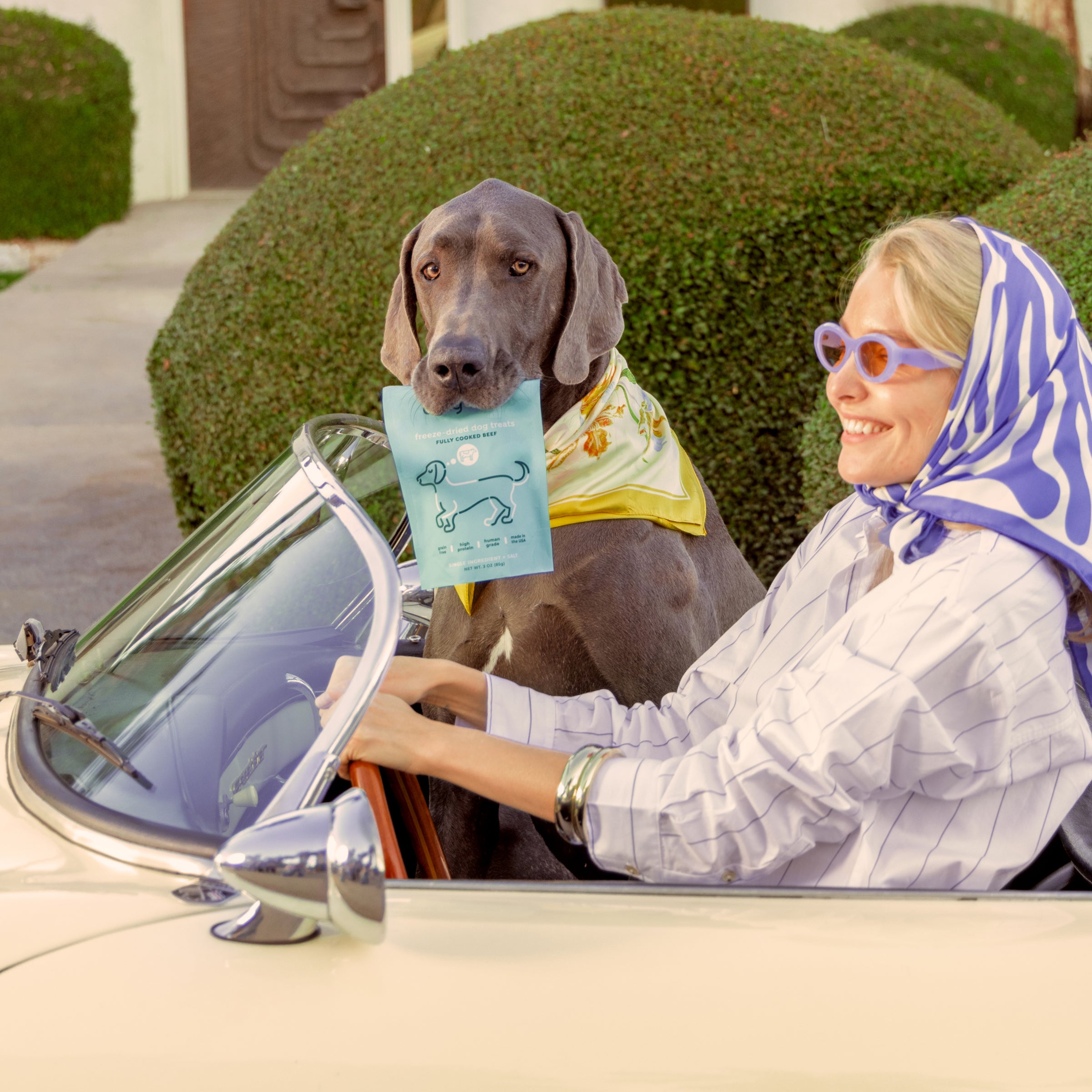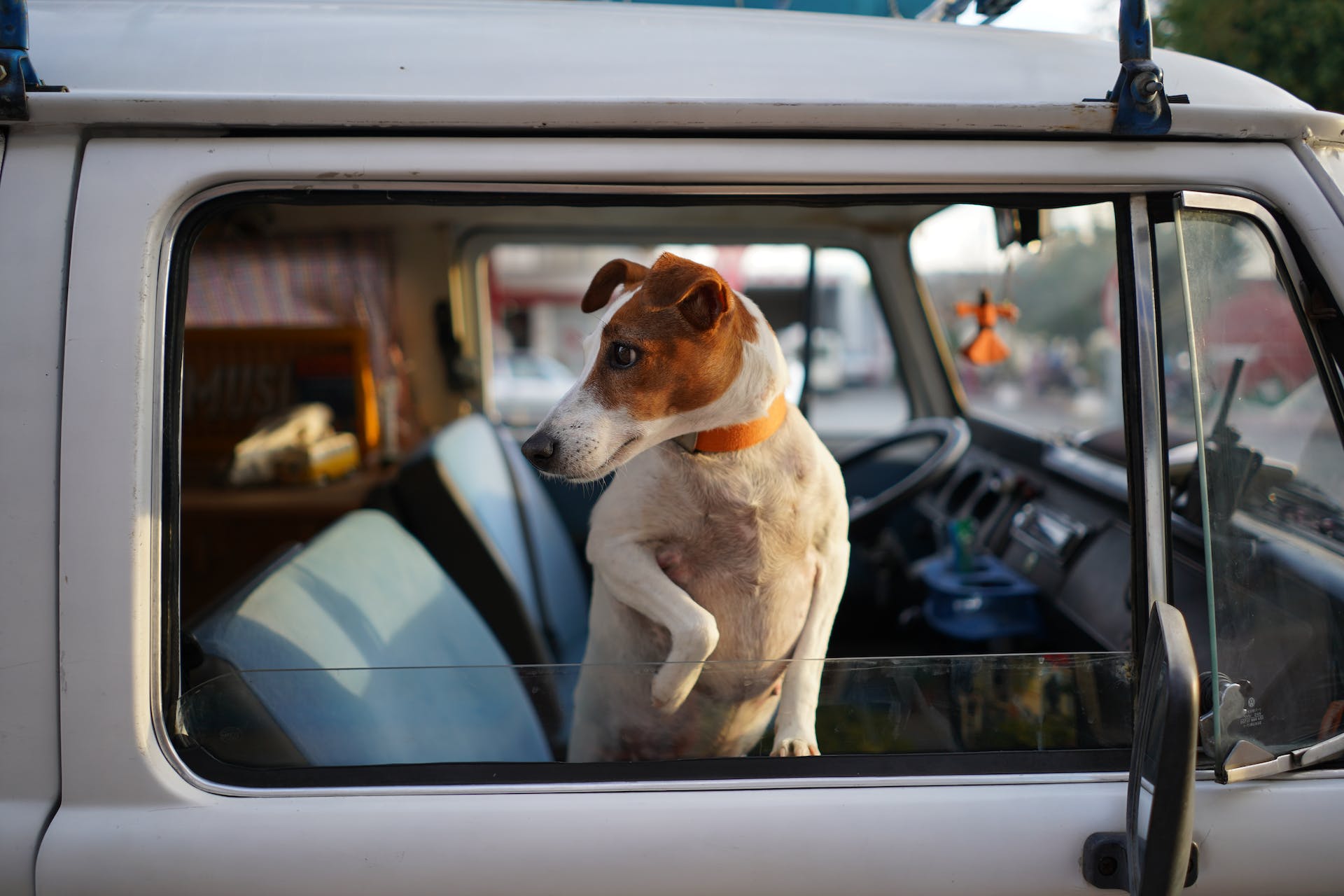With the holidays quickly approaching and vacation plans coming to fruition, making decisions about whether your dog is meeting the extended family or if they’re better at home is tough. There are many things to consider when you choose to travel with your dog and you might be questioning if it’s safe. We’ve compiled a list of our best tips on how to safely travel with your pup.
Pre-Trip
One of the most important things to do before traveling with your dog is to make a visit to your vet. If you are traveling by plane, you will need a certificate of health before your pet is allowed onboard. It is generally a good idea to keep your dog up-to-date on their vaccines, but this is a requirement for air travel. Your vet can also make the call to ensure your pup is mentally and physically capable to travel.
Before you embark on your trip, program your vet’s phone number into your phone so you can easily reach them if something were to happen. You should also research emergency vets near your destination to be prepared for anything that can happen.
If you’re not staying with family and are anxious about finding a pet-friendly hotel, there are many platforms you can use to find appropriate living arrangements. “BringFido” is a website that can aid you in your search for all things pet-friendly. You should always double-check that hotels or activities you plan on bringing your dog to are truly dog-friendly.
Identification
Your dog should always have some form of identification on them at all times. There are many things that could go awry when traveling and this will protect your pup from getting lost. Their leash and collar should be sturdy, but in the event they slip their collar, have your pet microchipped. A microchip can hold your contact information and any vet can scan your dog for it. Another safety measure is to bring a recent photo of you and your dog as further proof that they belong to you.
Trip Necessities
You should have a few things on hand when traveling.
- Food
- Water
- Medications
- Poop Bags
Always bring enough food and water for the duration of your trip plus a little extra–it never hurts to be prepared! Your dog will need frequent stops for potty breaks, so bring poop bags to keep the environment clean.
To Crate Or Not To Crate

Crating is a decision that not all owners feel is necessary. For those that do crate, consider bringing it along with you as you travel. Not only is this a safety feature for your pup, but it could calm potential anxiety. Their crate is often a place of refuge and having that during a stressful experience will help a lot. Stock the crate with their favorite toy, a dog water bottle, and a crate pad. This will ensure they’ll be comfortable.
Via The Car
Traveling by car with your pet is one of the easiest and most cost-effective ways to get to your destination. It is, however, one of the more dangerous options, as there are more variables that are out of your control.
For The Ones Afraid of Car Rides
While we all wish to have a dog that loves to go for rides in the car, the reality is that many dogs are frightened by large vehicles. If this is your dog, the best thing you can do to ease their stress is to take it slow. Get in the car with your dog and sit in your driveway or garage until they’re visibly comfortable. The next step is going for short rides around your neighborhood or town. Increase the time in the car as they get comfortable. Make sure to give them lots of treats and reward them for being brave.
Safety Precautions
Do you love when your dog hangs their head out of the window? Watching their ears flap in the wind is adorable, but this innocent action might be harming your pet. At high speeds, even a tiny speck of dust could cause injury to their corneas. The constant flapping of the ears in the window could cause swelling or worse complications that might require a vet visit. The same is true for dogs that sit in the bed of a truck without proper coverings. Some prey-driven dogs also enjoy chasing after small animals and might jump out of the window to go after something.
Some other safety precautions to consider include:
- Keeping the car well-ventilated
- Don’t give any food ahead of time, but give your dog lots of water. This will help prevent motion sickness in the car.
- Stop for potty breaks and exercise if it is a long car ride.
- Never leave them alone in the car. An enclosed car can reach triple digits within 20 minutes on an 80º day.
- Use a dog seatbelt. Dogs can become dangerous projectiles in the event of a car accident or they can run away and potentially cause more damage. Restrain them in the back seat.
- Never allow your dog to sit in the front seat with you. This can be a distraction to you and dangerous to them if an airbag goes off.
Via A Plane
Traveling on a plane with pets can be a complicated experience. There are lots of rules and regulations to follow that can be overwhelming to comprehend. All airlines will require a certificate of health for your dog 10 days in advance of flying. Your dog will also have to be older than 8 weeks old and weaned off their mother.
At the vet visit before you depart, ask your vet if sedation is a good idea for your dog. This can help ease the anxiety of your pet, especially if they need to be in the cargo hold. Not every vet will recommend sedation and some airlines might not accept dogs under sedation. It can be dangerous as pressure changes in the cargo hold or cabin might affect your dog’s respiratory and heart function. You should never bring a brachycephalic dog on an airplane. These dogs have issues with their breathing and being on a plane could exacerbate them.
Many flights have a limit on how many animals it can transport, so make sure to make a reservation for them as soon as possible. It is also recommended to take a direct flight to your destination, rather than having layovers. Some airlines won’t allow you to have a dog in the cargo hold if you have a layover over 4 hours.
Where Does Your Dog Go?
All airlines will require large dogs to travel in the cargo hold, while dogs under 20 pounds are traditionally allowed to travel in the cabin. We recommend you check the rules of your preferred airline before booking tickets, as every airline will have different rules and procedures for flying with pets.
If your dog does travel in the cargo hold, make sure to tell every airline employee that your pet is traveling there. They will likely already know, but telling them ensures that your dog will be checked on during any delays. You can also ask to see your dog board so you know they made it on the plane safely. Always ask a flight attendant if you are able to do this; providing them a little tip gives them an incentive to say yes.
Airlines require dogs that are traveling in the cargo hold to be in solid-sided crates. These crates should have the following features:
- Large enough to allow movement
- Sturdy sides and handles with grips
- Leak-proof bottom
- Ventilation on opposing sides
- Live Animal sticker with owner information written on it.
You should always get your dog used to crates before traveling long distances–especially when they aren’t normally crated. This new form of restriction could be stress-inducing on your pup.
Our Tips and Tricks
Getting through a long travel day with pets can be easy. Preparation is key for long journeys and your dog will thank you for the research you put in. We recommend the following tips to be properly prepared to have an amazing trip and vacation.
- Plan bathroom breaks: Your dog shouldn’t go longer than 4 hours without a potty break. Planning out stops ahead of time will help keep your travel day on schedule and take stress off your shoulders.
- Bring toys and games: This will help keep a bored dog happy and entertained. Just don’t bring a squeaker toy for your own sake.
- Puppy-proof your vacation home: If you’re not staying with family, there could be large fees involved if your dog destroys something in the house. Prevent your dog from getting into anything to limit the possibility of a headache later.
- Consider the location: You might want to bring your dog but is the area you’re going to safe? Consider how pet-friendly local businesses are to gauge if it is worth it to bring your dog.
- Keep the car cool: A comfortable dog is a happy one. Cars can get stuffy when there are lots of people inside and a well-ventilated, cool car can relieve discomfort for your dog.
- Keep it short, keep it sweet: You should limit how long you drive for in one day. You should not drive for more than 12 hours without a break.
- Bring comfort items: Comfort items are a great idea for the most anxious of pups. Having something that smells like you or their favorite toy lets your dog relax a little in the stressful traveling environment



